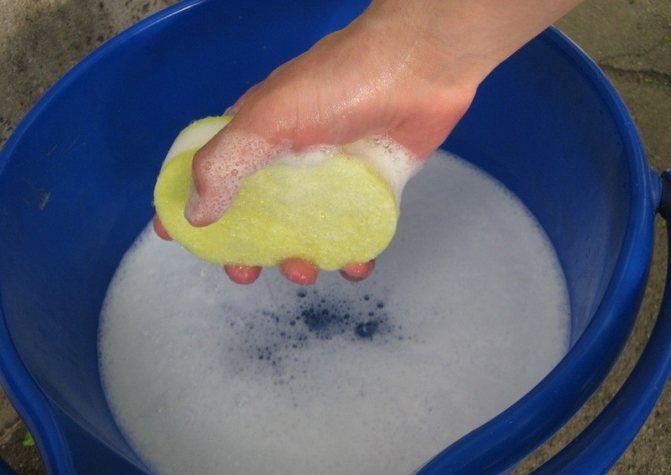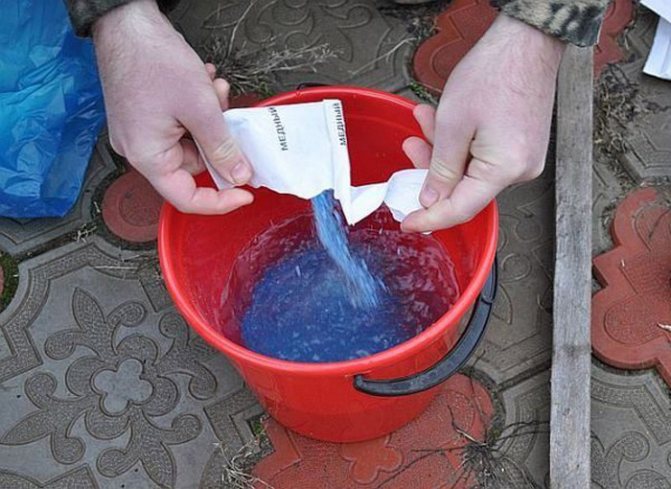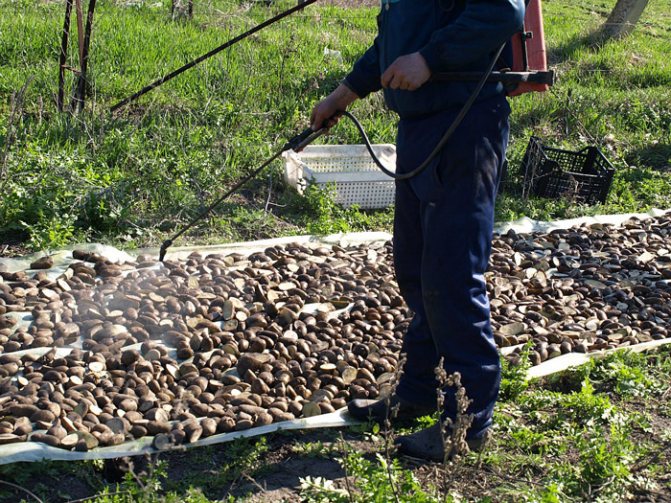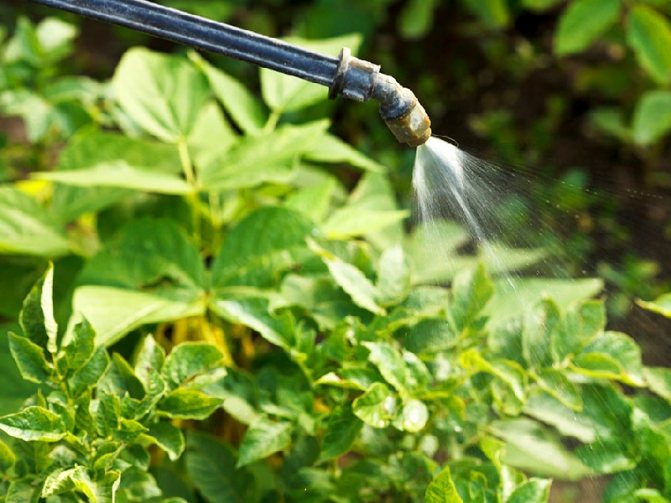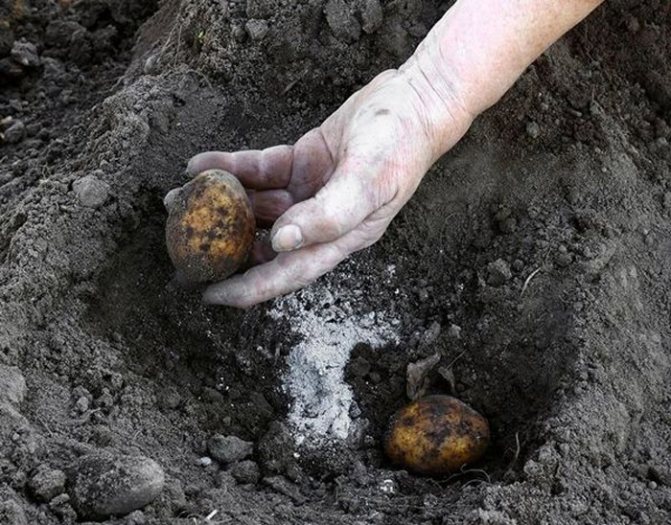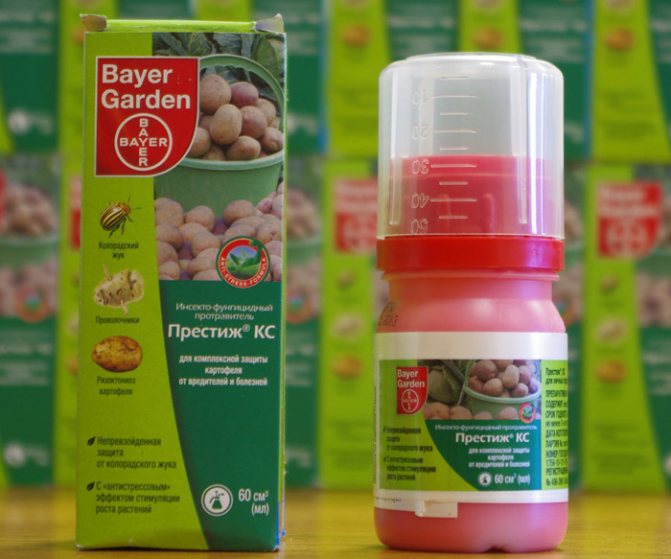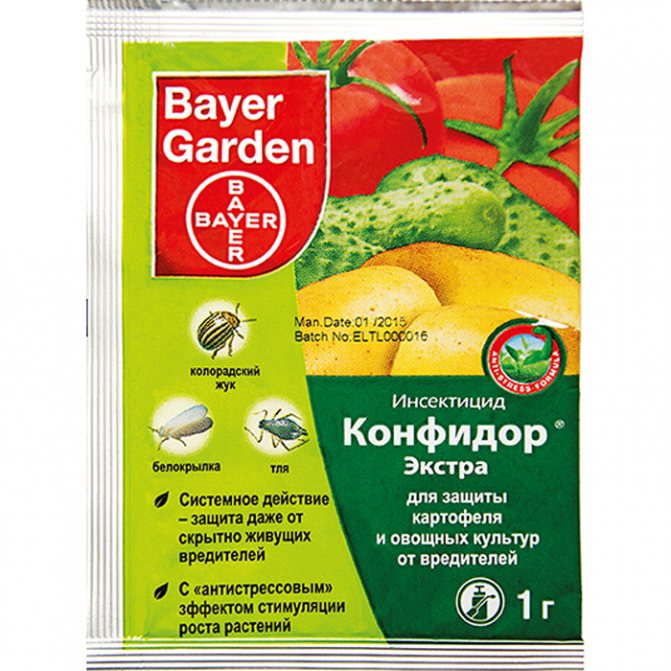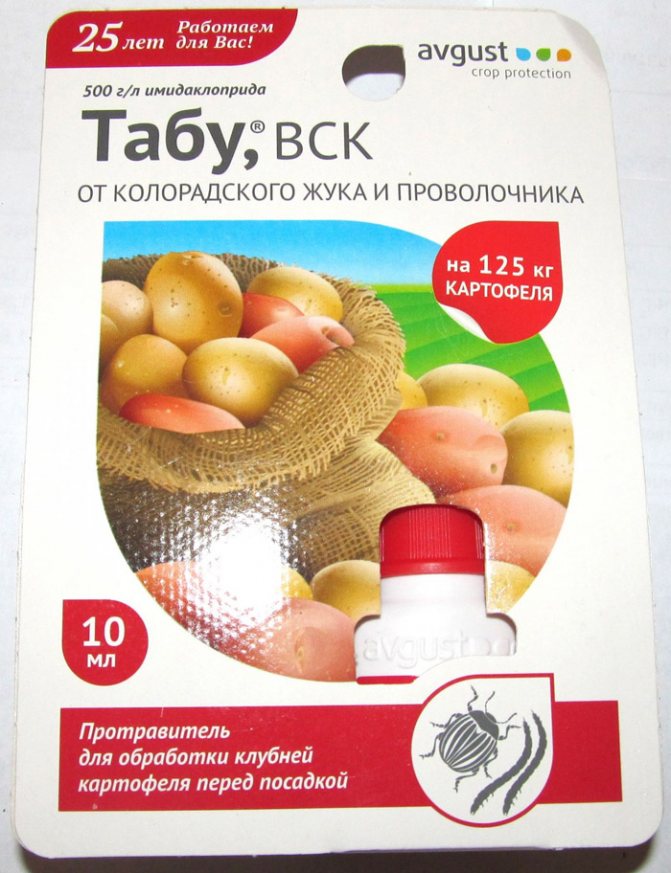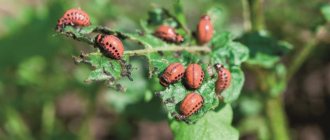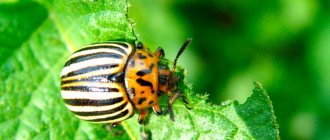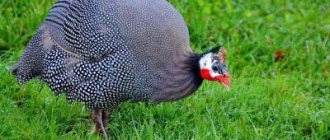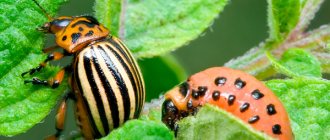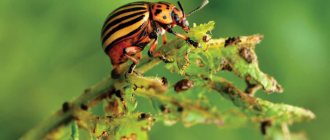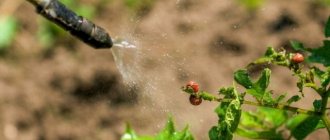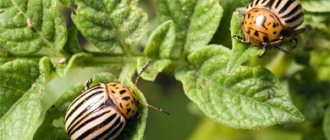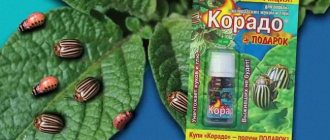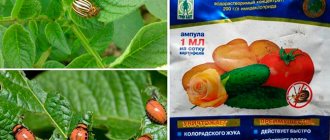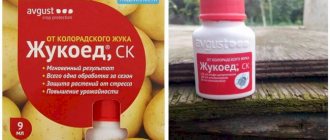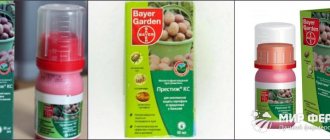Folk remedies for the Colorado potato beetle on potatoes are a suitable option if children play or have pets near the fields. In this case, toxic chemicals and biological products can be dangerous, in addition, harmful chemical compounds can accumulate in the tubers.
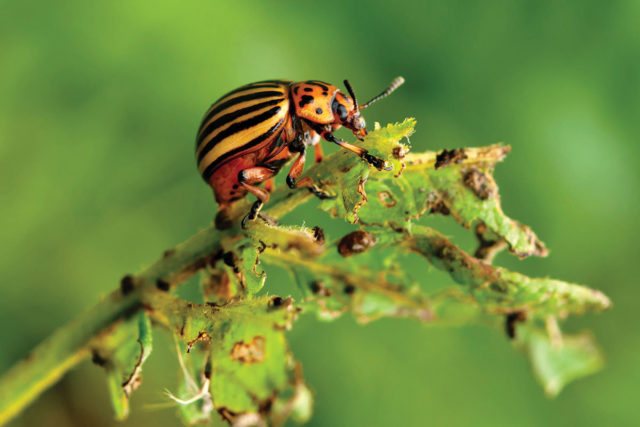
Hand picking the Colorado potato beetle
This method will help if the site is small and there is enough free time. To speed up the collection process and kill the beetles by at least a few days, the following recommendations must be taken into account:
- To prevent insects from crawling out, they must be collected in a bucket of water with the addition of laundry soap, ammonia, soda or salt. Some people use kerosene for these purposes, but poisoning can occur from its vapors.
- You can not crush the pest and its larvae between potato beds. They can survive and continue their livelihoods.
- In warm weather, beetles are easy to pick at the tops of the plants. In this case, do not forget to inspect the lower part.
- When collecting, you always need to destroy the clutches so that new specimens do not hatch.
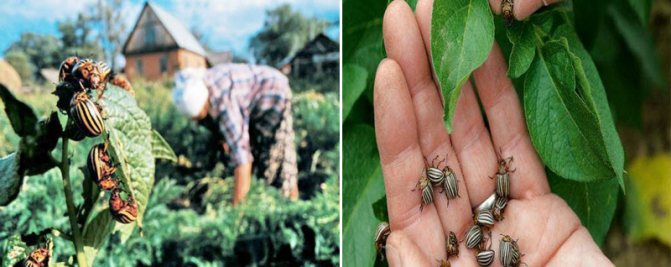

Tips from experienced gardeners
Experienced gardeners have their own methods of dealing with Colorado beetles, below are a few examples of a non-standard approach to pest control:
- Salt water is poured into a bucket or wide basin and placed under a potato bush affected by the Colorado potato beetle. With the help of a broom or a stick, they gently knock on the tops so that the beetles and larvae fall into the container. The caught beetles are destroyed.
- Next to the potato beds, on which the tops have already grown, old tubers are planted. Young shoots of later planting will attract the attention of beetles, they will begin to crawl to young shoots, where they can be easily collected and disposed of.
- It is recommended to sow sidun beans between the potato beds. This is a bush type of beans that does not require a garter to a support. According to gardeners, the Colorado potato beetle bypasses the planting of beans.
- An excellent result is obtained from the use of chicken manure. After harvesting, the fields are treated with a 4% aqueous solution of chicken manure at the rate of 80 buckets per hundred square meters. According to gardeners, the Colorado potato beetle after such a procedure disappears for at least 10 years.
- Perhaps the most unpleasant and inhumane way is to poison the Colorado beetles with their own help. You need to collect a 0.5 liter jar of adults, put it in a bucket, fill it with water and close the lid tightly. First, the dead insects will float on the surface, then they will go to the bottom, from that moment you have to wait a week, and the poison will be ready. It should be diluted with water 1: 3, 1: 2 or 1: 1 and tried first in a small area so as not to burn the tops.
Mr. Dachnik recommends: a device for easy collection of Colorado beetles
To facilitate the task of manually collecting the insect pest, a handy device is often used - a landing net. Do it yourself:
- Take a bag of granulated sugar.
- Make an incision on the side and sew at the top (on the side from which the contents poured out).
- Make loops along the cut, through which stretch a thin (up to 4 mm) wire 2.5-3 m.
- Bend the end and twist to make a handle.
- Cover the bush with the trap and shake well.
- After each row, empty the tool into a bucket of soapy water or brine.
Thanks to this device, there is no need to bend over each plant and carry a bucket.
Benefits of a chemical pre-etchant
Until recently, insecticides, fungicides and growth promoters were used separately, since there were simply no multicomponent preparations. It was inconvenient because it took a lot of time, because not every drug can be combined with any other at the same time. The potatoes had to be processed several times, each time by different means.
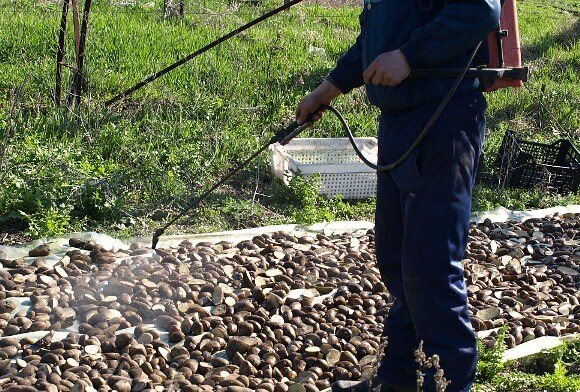

Now, to the delight of gardeners, combined preparations have appeared, which include compatible insecticides and fungicides. Such funds have many advantages:
- 1-2 treatments per season are enough;
- the effect of one spraying lasts up to 2 months;
- the drugs have a wide spectrum of action (protection from both insects and fungus);
- it is convenient to use (you do not need to mix anything else, calculate the ratio of the area, the number of pests and the volume of the working material);
- affordable price (do not compare with the purchase of two different products, as was done earlier).
These advantages are quite enough to seriously think about the use of special agents for the Colorado potato beetle on potatoes.
Types of insecticides
Insecticides are divided into types, depending on how they affect the pests:
- Contact. When an insect comes into contact with etched leaves, stems and the root crop itself, the poison enters the pest's body and leads to intoxication. Such funds are more suitable against sucking parasites (larvae of the Colorado potato beetle, various caterpillars, etc.). But there is also a minus: these insecticides are washed off by precipitation, and if the insect miraculously did not touch the treated surface of the plant (that is, if the etching did not completely affect the bush), poisoning may not occur.
- Intestinal. They enter the intestines of the pest, cause poisoning and lead to death. More suitable for gnawing insects.
- Systemic. Once on the plant, they are absorbed into all its parts (roots, leaves, stem). Insects eat the poisoned fibers and soon die. These insecticides are quickly absorbed by plants, so no precipitation is terrible for such agents.
- Fumigants. The drugs enter the respiratory tract of pests, poison them and lead to fatal poisoning. They save from many different insects and are very effective.
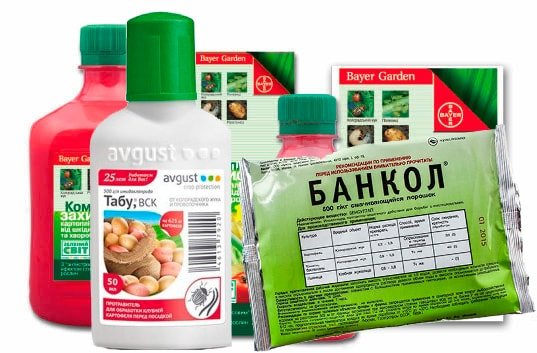

This applies to insecticides of the same type. But in order to process potatoes before planting from the Colorado potato beetle, it is better to use drugs of enhanced (double or triple) action.
Various spraying methods from the Colorado potato beetle
Spraying with infusions and decoctions from plants helps. To be effective, you need to adhere to the following rules:
- Carry out at dawn or after dusk so that the liquid does not evaporate under the sun. If the weather is cloudy and cool (no more than + 11 ... + 14 ° С), then potatoes can be processed during the day.
- Spraying should be done regularly 1-2 times a week. The last time - at least 20 days before digging out the tubers.
- The prepared infusions must be used fresh. When they stand for a long time, they lose their effectiveness.
The most effective recipes:
| Main ingredients | Cooking method |
| Garlic or wormwood |
|
| Mustard powder and vinegar |
|
| Greens (dry) and walnut peel |
|
| Celandine |
|
| Wood ash | Dilute 200 g of powder in 10 liters of water. |
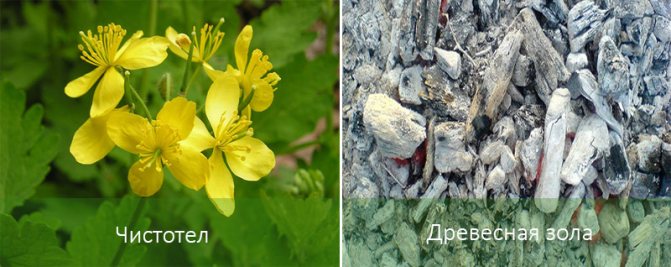

The listed funds can also be poured into the holes made in the ground near the plantings.
When to spray potatoes?
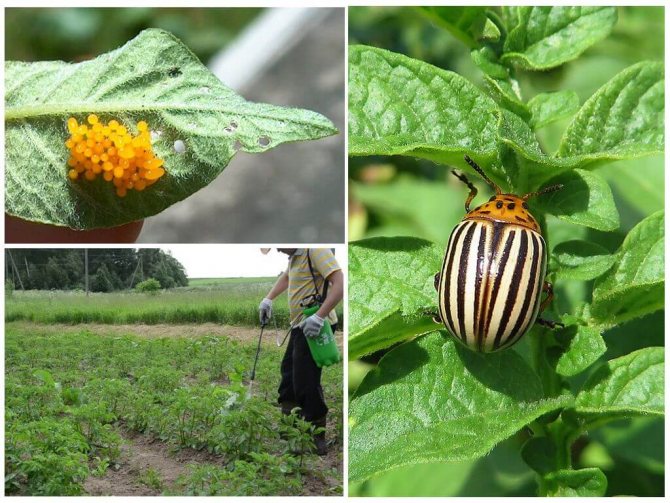

Spraying potatoes from the Colorado potato beetle
If you plan to use various pest control agents, you need to know how and when to spray potatoes from the Colorado potato beetle. The optimal time is chosen based on the type of vegetable:
- it is better to sprinkle early potatoes when the first eggs laid by females appear, then again - after 10-14 days;
- medium and late varieties are sprayed with a large number of larvae and adult pests.
The optimal spraying time is dry and calm weather, with high humidity the poisons will become less concentrated, which will reduce their effectiveness. In hot weather, processing is hazardous to health due to strong toxic fumes of chemicals.
You should also know the time when it is better to process potato bushes: this is in the morning hours before 9-10 and in the evening after 18, but you also need to make sure that there is no dew or rain drops on the leaves.
During the period of mass flowering, it is not recommended to spray potatoes, since during the formation of tubers, the plant is vulnerable to chemicals, and toxic drugs can destroy not only harmful, but also beneficial pollinating insects. Therefore, it is better to postpone the treatment until the end of flowering.
If the manual assembly of Colorado beetles at such a time does not bring success, then you can use biological preparations that will bring less harm to the crop and help protect the bushes from harmful insects.
Important!
Treatment with chemicals can be carried out at least 2-3 weeks before the start of the potato harvest, otherwise the resulting tubers will be harmful to health.
"Dry" methods of dealing with the Colorado potato beetle
This is pollination of the aboveground part of the bushes and sprinkling of the soil. "Dry" methods will give results only with regular use and alternation of different options:
| Methodology | Recommendations |
| Dusting with ash | Any, but the most effective sifted birch will do. Best done at dawn or after precipitation. We need 10 kg per one hundred square meters. After a one-time pollination, many pests die in a couple of days. Before flowering, the procedure should be performed once every 2 weeks. After its completion - once a month. |
| Processing with corn flour | Once in the stomach, it swells. Because of this, pests die. The foliage should be moist during manipulation. |
| Pollination with cement or plaster | Many experienced gardeners recommend this method. |
| Sprinkling with sawdust | Beetles hate the smell of fresh wood. If you sprinkle the soil between the rows with pine or birch sawdust, the pests will bypass the side of the garden. Before flowering, this must be done once every couple of weeks, after the end - once a month. |
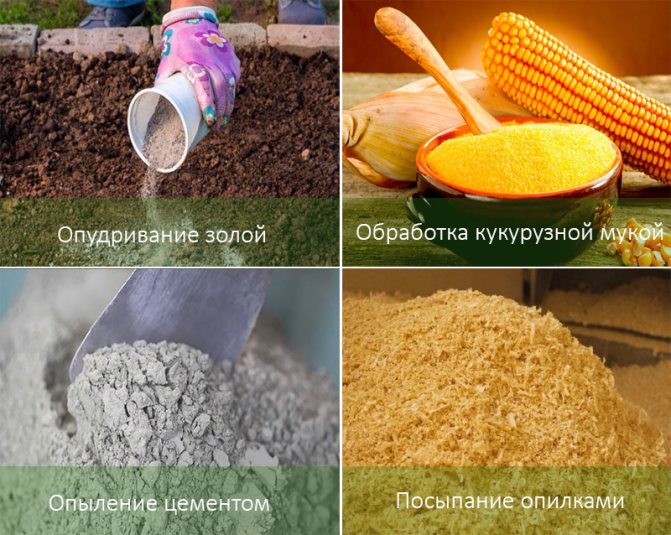

The value of flowering potatoes for ripening tubers
Despite the fact that only tubers have the main nutritional and industrial value in potatoes, for the qualitative formation of these formations, the plant needs to carry out a full vegetation cycle of development. In the green aboveground part of the bush in the sunlight, photosynthesis takes place - a key process of plant metabolism, in which monosaccharides (glucose molecules) are synthesized from simple inorganic compounds first, and then complex polysaccharides, including the desired starch. Starch polymers accumulate in the storage organs of potatoes - root tubers. The number and size of tubers depend on the quality and duration of photosynthesis, the sufficiency of the initial substances and the presence of general favorable factors (heat, lighting, humidity, soil air and underground space). Hence, it becomes clear why, when the green mass is damaged by the Colorado potato beetle, the yield of root crops suffers. Having built up the green mass and developed generative organs, the potato bush begins to store nutrients "in reserve".The emergence and formation of tubers in medium-early potato varieties popular in Russia occurs during flowering, the timing of which coincides with the period of greatest activity of adult insects and their larvae. The beetle eating the tops at this important time for plants slows down the formation of tubers, since the synthesized nutrients go not to underground "storages", but to try to restore damaged organs. In addition, during the injury of the stem, spores of fungi and viruses can get into the wounds, which will lead to damage to the crop and infection of the site. The importance of flowering for the potato harvest is indirectly confirmed by the fact that the practice of removing inflorescences, which some gardeners use, can lead to an increase in the number of tubers by 1 - 2 pieces, but the roots themselves grow small, uneven, and they contain little starch.
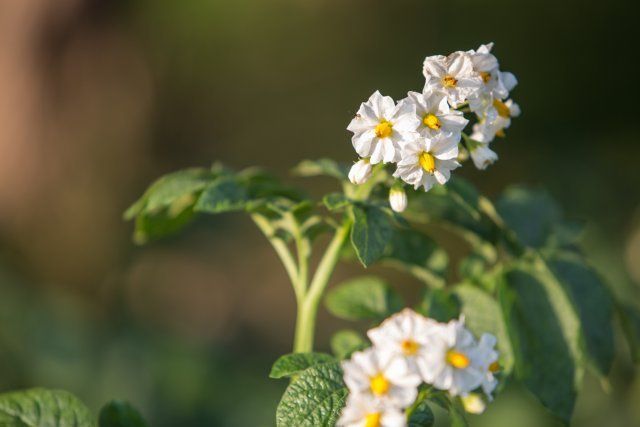

The exception is some modern potato varieties, in which the absence of flowering or a small number of flowers in the brush is the norm. These are ultra-early "Rocco", "Timo", "Empress", "Mariella". Variety "Vesna" forms buds only in humid summers and fades very quickly, and does not bloom at all during periods of drought. The exclusion of flowering in this case is beneficial for the farmer, since the plant does not spend energy on the formation of organs that are not economically important.
Neighbors that "striped" does not tolerate
There are plants, the aroma of which colorado does not tolerate. Therefore, they need to be planted between potato beds to scare away pests. List:
- black shaves;
- borage;
- marigold;
- cilantro;
- nasturtium;
- mattiola two-horned (colorful, fragrant and very undemanding flower to care for);
- hemp;
- fragrant tobacco (the grass is poisonous for colorado, bushes located at a distance of 3-5 m from it will be definitely protected).
Also, potatoes can be planted in the aisles, along the perimeter or diagonally next to:
- Solanaceae.
- Beans.
- Vegetable beans. Recommended for planting in seed-grown potatoes. It will be small and will not shade the repellent plant.
- Bow.
- Horseradish.
They will not only scare off the beetle, but will also yield a crop. The following plants, planted around the land plot, will also create an obstacle for "stray" pests:
- tansy;
- catnip;
- clear white.
Of course, this method does not guarantee that there will be no harmful insects. However, such a barrier would significantly reduce their population.
White clover will cleanse plantings from pests
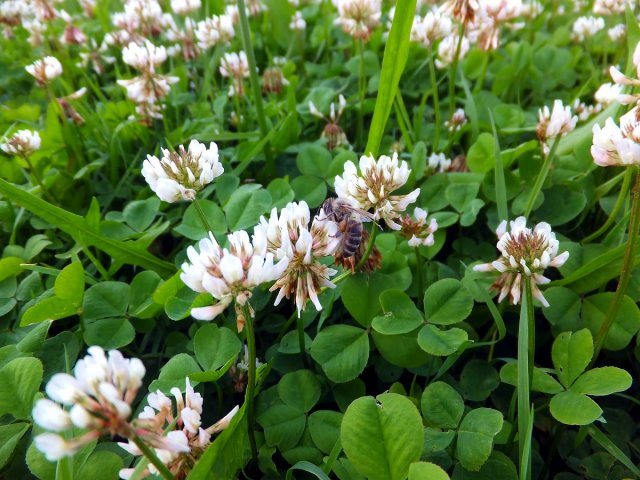

Fighting the Colorado potato beetle with folk remedies enriches summer residents with new agrotechnical knowledge, because in order to destroy the enemy, you need to know everything about its features. So, these insects do not like when the soil is enriched with nitrogen. Plants of the legume family, in particular white clover, actively absorb nitrogen from the air and transfer it to the root system. Thus, the soil at the planting sites becomes unsuitable for the habitat of the Colorado potato beetle.
Plant perennial white clover near your garden beds, aisles, or on a lawn to keep the pests away from your potatoes. This method also helps to scare off the larvae of the beetle (beetle).
Colorado potato beetle larvae also do not like the smell of cruciferous crops (cabbage, canola, etc.).
Which drugs are better
The gardeners recognize the following as the most effective among the combined insecticides:
- Matador Grand. The drug is insect-fungicidal systemic action. Contains metalaxyl, imidacloprid and cymoxanil as main active ingredients. This is a concentrated emulsion that protects plantings for 35-45 days. Equated to hazard class 3 (moderately harmful to humans), used in a ratio of 90 ml / 1 l.
- Taboo. Russian insecticide of complex action. The main active ingredient is imdocloprid.This highly concentrated emulsion works for up to 40 days, and then is completely removed from the plant and decomposes into harmless compounds. The product has been assigned the 3rd hazard class. It is used in a ratio of 8 ml / 1 l.
- Celeste Top. New insecticide + fungicide providing contact-systemic action on insects. Protects plantings for 1 month, sold as a suspension, diluted in an amount of 10 ml per 1 liter. Has a hazard class 2 (you need to work with it with extreme caution)
- Cruiser. Copes well with most pests. The main substance is thiamethoxam. A systemic insecticide that is easily compatible with any fungicide (you can use them simultaneously). This high concentration emulsion protects potatoes for 6-8 weeks. Dilute - 40 ml / 3 l. Hazard class - 3rd.
- Prestige. Insecto-fungicide, which can be used both for pre-plant dressing of tubers and for soil disinfection. It is considered one of the best drugs against the Colorado potato beetle and soil pests. The prestige is completely absorbed by the plant and is removed after 2 months. The term of its protective action is up to 50 days. Sold as an emulsion or powder. Active substances - pencycuron, imidacloprid. For 100 kg of potato tubers, a solution of 50 ml / 3 l is required. Hazard class - 3.
- Tanrek is a domestic drug. Colorado potato beetle and many other types of pests are effectively destroyed.
Most of the listed funds have a 3rd class of hazard, which indicates a low degree of threat to human health. But this does not mean that when working with them, you can neglect the basic rules.
Living barriers against the pest
It does not tolerate strangers and the smells of some of our plants. You can take advantage of this weakness and arrange fragrant islands of mattiola, nasturtium, coriander, calendula or marigolds among the rows of potatoes. Potato protection also consists in planting rows along the perimeter of the plot:
- horseradish;
- Luke;
- beans;
- beans.
Thus, experienced gardeners and additional crops are removed and leaf-gnawing is expelled. True, one should not hope that none of the pests will penetrate the site, but there should be no doubt that the phytoncidal barrier will work.
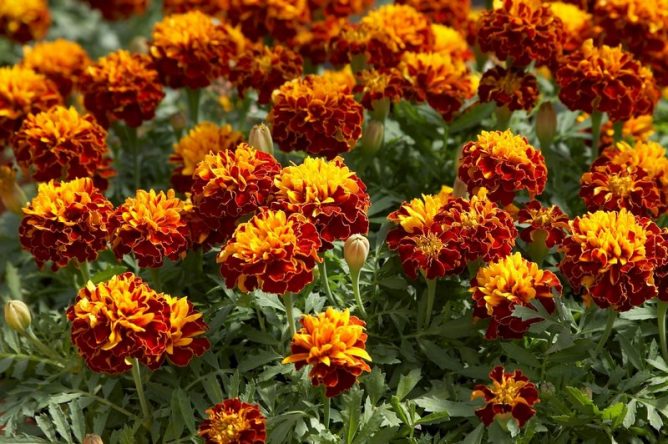

How to process potatoes before planting?
The main conditions for good fruiting of crops are comfortable conditions for development, maximum protection. If these factors are not taken into account, then even unfavorable weather conditions can leave a farmer without a crop.
Preparation of root crops for sowing is carried out in stages. Before planting seed potatoes, you should:
- calibrate;
- plant greenery;
- germinate;
- treat with special preparations.
Sizing involves dividing the seed into 3 groups by size. Instances weighing less than 40 g are planted separately. Tubers of 70-100 g are considered the most suitable for sowing. Large root crops are cut into pieces, simultaneously cutting off the damaged areas.
Large potatoes should be divided along, sprinkling the cut with ash or sprinkling with a pale pink solution of potassium permanganate.
For landscaping, potatoes are laid out in the light. You cannot arrange the material in several layers. Solanine accumulating in green tubers contributes to an increase in the germination of potatoes, but such specimens should not be eaten. You can plant potatoes in autumn or spring.
Treating potatoes before planting to stimulate growth
The range of biostimulant drugs is quite wide. Let's consider the most popular ones.
Epin
The drug promotes rapid growth of bushes, shortens the ripening period of tubers. It is enough to spray the potatoes the day before planting them in the soil. Re-treatment with Epin is carried out after germination.
To make a working mixture, you need to mix 250 ml of water with 1 ml of the drug.The resulting composition is enough for 50 kg of root crops.
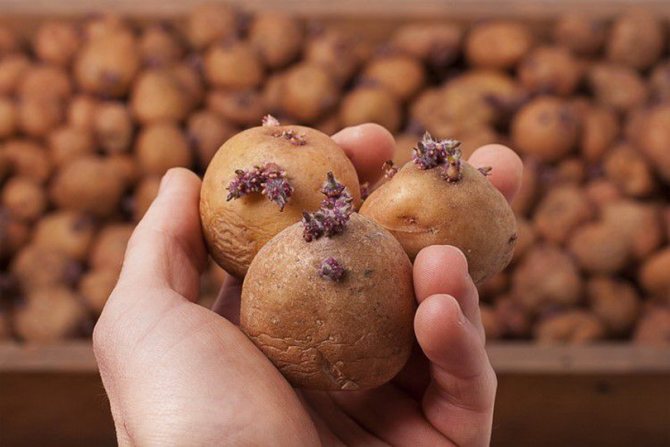

Bioglobin
The composition is adaptogenic, mobilizes and enhances the immunity of potatoes, starting from the seed stage. To accelerate the appearance of sprouts, the tubers are soaked in the drug solution for 1 hour.
The tool is often used to combat late blight. For this purpose, the selected root crops are soaked for half an hour. The procedure is performed before germination, 30 days before planting in the soil. After the sprouts appear, you need to spray them with a solution of the drug, lightly sprinkle with earth.
Zircon
The tool is an active immunomodulator, it is used to accelerate the growth of potatoes, root seedlings, stimulate the development of other garden crops. The advantages of the drug are:
- compatibility with most fertilizers;
- environmental Safety;
- the ability to adapt plants to bad weather;
- protection of cultures from bacterial and fungal infections.
Potatoes are sprayed with the drug at the germination stage or during the flowering period. The working solution is prepared in accordance with the instructions, exceeding the dosage is strictly prohibited.
Poteytin
This adaptogenic agent accelerates the growth of potatoes, activates root development, and increases yields. To obtain the maximum effect, it is necessary to process the tubers three times:
- before long-term storage;
- after landscaping;
- before planting in the ground.

